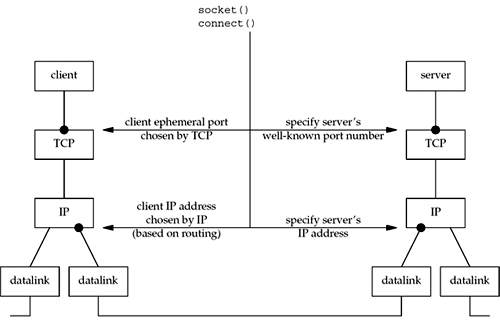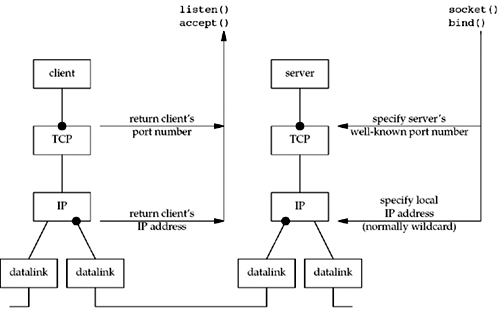5.17 Summary of TCP Example
Before any TCP client and server can communicate
with each other, each end must specify the socket pair for the
connection: the local IP address, local port, foreign IP address,
and foreign port. In Figure
5.15, we show these four values as bullets. This figure is from
the client's perspective. The foreign IP address and foreign port
must be specified by the client in the call to connect.
The two local values are normally chosen by the kernel as part of
the connect function. The client has the option of
specifying either or both of the local values, by calling
bind before connect, but this is not common.

As we mentioned in Section 4.10, the
client can obtain the two local values chosen by the kernel by
calling getsockname after the connection is
established.
Figure
5.16 shows the same four values, but from the server's
perspective.

The local port (the server's well-known port) is
specified by bind. Normally, the server also specifies the
wildcard IP address in this call. If the server binds the wildcard
IP address on a multihomed host, it can determine the local IP
address by calling getsockname after the connection is
established (Section 4.10).
The two foreign values are returned to the server by
accept. As we mentioned in Section 4.10, if
another program is execed by the server that calls
accept, that program can call getpeername to
determine the client's IP address and port, if necessary.

|